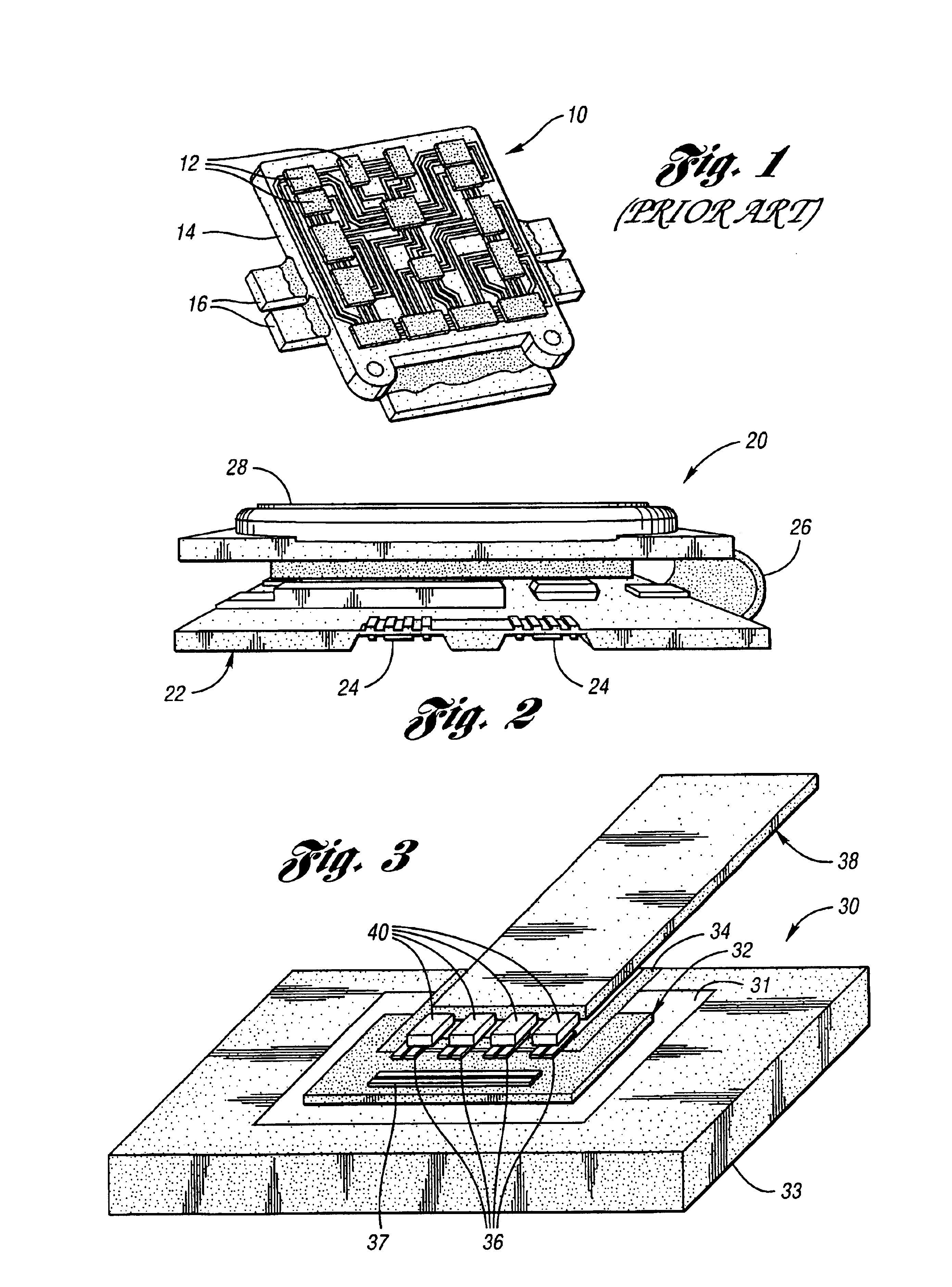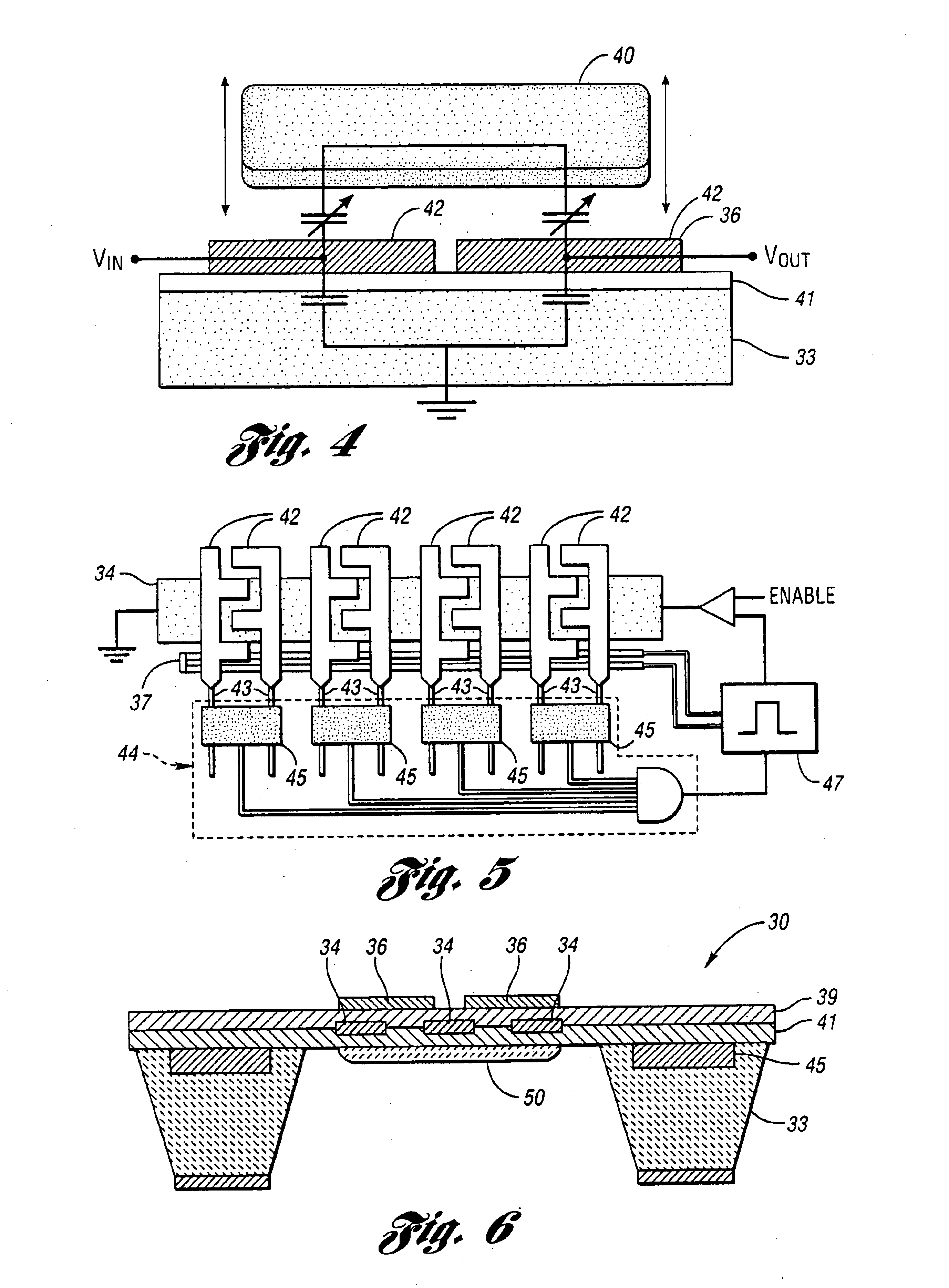Method for electrically and mechanically connecting microstructures using solder
a microstructure and electrical connection technology, applied in semiconductor/solid-state device testing/measurement, semiconductor/solid-state device details, instruments, etc., can solve the problems of insufficient size of the board, insufficient electrical connection, and insufficient electrical connection
- Summary
- Abstract
- Description
- Claims
- Application Information
AI Technical Summary
Benefits of technology
Problems solved by technology
Method used
Image
Examples
Embodiment Construction
)
[0050]In general, solder-based microconnections in which contact is automatically detected in the bonding pad area to initiate bonding by triggering localized heating of solder is described herein. This approach requires very little force and no equipment beyond a positioning tool or manipulator. FIG. 2 illustrates a system, generally indicated at 20, that implements such microconnections along with some of the aforementioned approaches to shrinking the size of Microsystems. The system 20 includes a CMOS multi-chip module 22, solder-based microconnections 24, a folding hinge assembly 26 and a battery or power source 28.
[0051]For the microconnections, heat is applied directly under metal contact pads on a silicon substrate. When a device with pre-soldered lead tabs contacts the heated pads, the solder melts and establishes the desired bonds between the lead tabs and the pads. By confining the heated region to a very small area using thermal isolation, relatively low power is consume...
PUM
 Login to View More
Login to View More Abstract
Description
Claims
Application Information
 Login to View More
Login to View More - R&D
- Intellectual Property
- Life Sciences
- Materials
- Tech Scout
- Unparalleled Data Quality
- Higher Quality Content
- 60% Fewer Hallucinations
Browse by: Latest US Patents, China's latest patents, Technical Efficacy Thesaurus, Application Domain, Technology Topic, Popular Technical Reports.
© 2025 PatSnap. All rights reserved.Legal|Privacy policy|Modern Slavery Act Transparency Statement|Sitemap|About US| Contact US: help@patsnap.com



